Visual artist Grace Athena Flott hails from eastern Washington and has called Seattle home for the last ten years. Previously active in the Seattle labor movement and community organizing, Grace transitioned to art after she was severely injured in an apartment fire; the language of realist art became a way of storytelling, and the meditative process of painting was instrumental in her healing.
Cherie Dawn Haas: What was your transition like, as you recovered from the fire and began turning to art?
Grace Athena Flott: My transition to art was natural and necessary. Anyone who has faced death knows that words can only describe so much of an experience. During my recovery, I looked all over for other people with stories similar to mine, but I never found much that truly resonated. Images are like fragments of memory and imagination. As I was learning about post-traumatic stress and the reasons the brain holds onto certain memories and ideas, I began to release some of my memories on paper with oil pastels.
Before my atelier training, I was most familiar with pastels and worked in what I see now as a very expressive and abstract manner. I’ve been artistic since I was a kid, and it felt second nature to begin plumbing this well of memories, sketching sometimes late into the night. In doing so, I was beginning to understand something very fundamental about myself and what surviving a fire meant to me. I was integrating a visual experience that was horrific, but also feeling the satisfaction of making it into color and texture on paper.
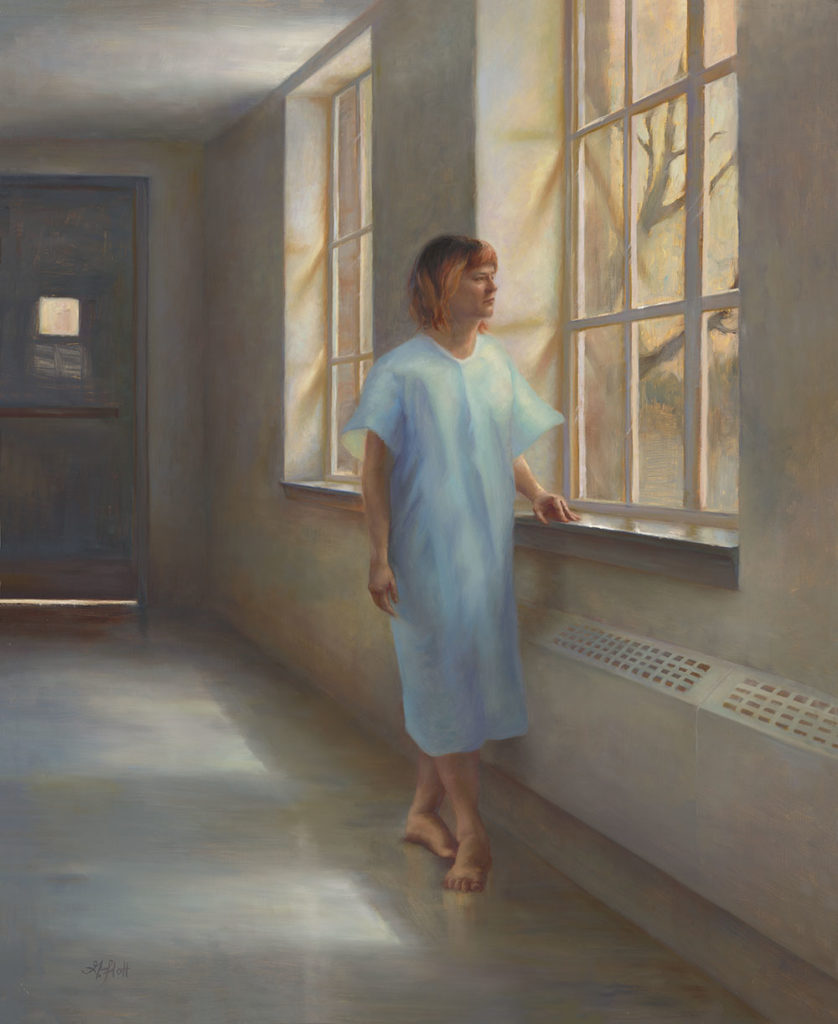
CDH: What initially led you to drawing and painting, and how has your relationship with art changed since the fire?
GAF: The biggest change is that I discovered the language of realism and its power to tell stories. I love that a viewer can look at a painting and immediately recognize what I’m showing them. As a contemporary realist I’m using the familiar symbols of everyday objects and people, but I can paint them in a way that makes the viewer slow down, take a look, and engage with them in a new way. I’m painting today’s world in an old language. For me, I love the meditative and challenging experience of painting from life and the opportunity it provides me to be present in the moment.
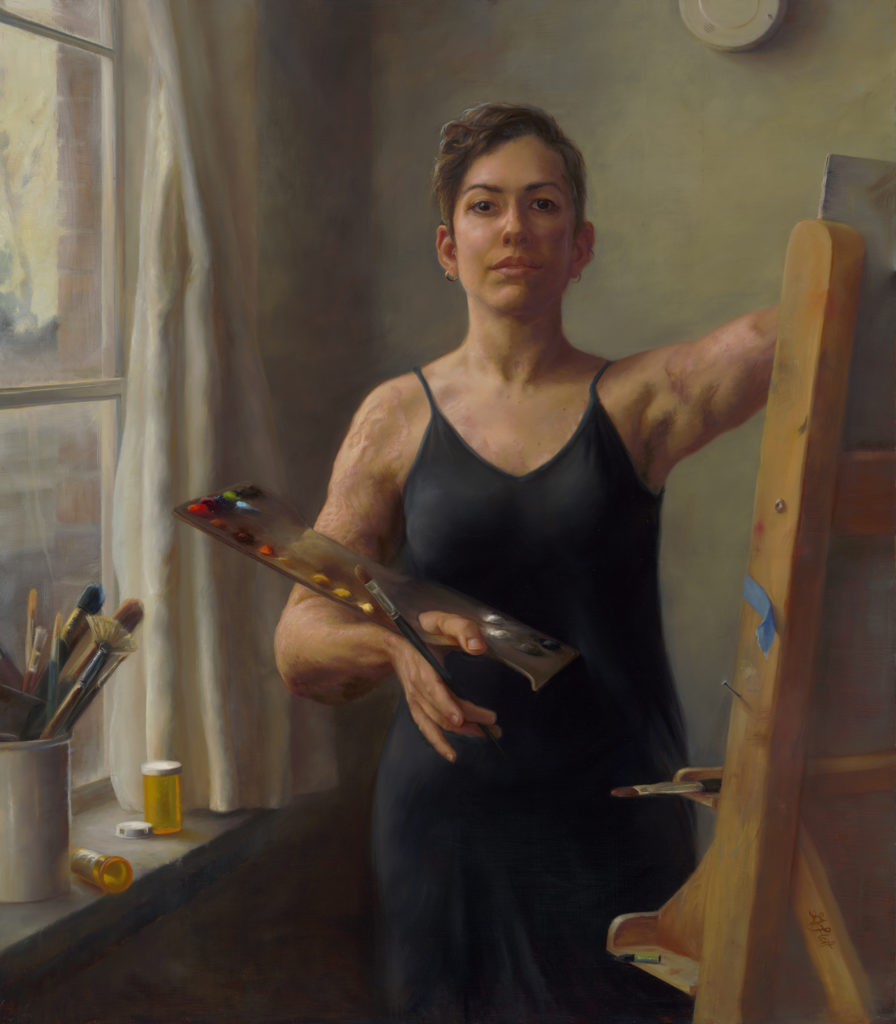
CDH: Please tell us about the work you’re most proud of, and what it means to you.
GAF: A particular section of my self-portrait painting (shown below) unlocked something deep within me. Because I work from life, I spent many long hours looking at myself in a mirror and trying to describe as truthfully as possible what I saw. I’ve had many years to make friends with this person in the mirror, but the process of painting my skin forced me to claim my body in a completely different way. People with burn scars often feel that we should hide ourselves for fear of unwanted attention or negative comments, and I’ve certainly experienced my share of weird looks and invasive questions about my skin. When this happens, it can create a lot of shame and anxiety around your body image. What this painting gave me was a renewed and profound sense of self-acceptance. In describing all the little shapes and colors of my skin, I made my burns come alive, and I realized how fascinating and unique my skin really is.
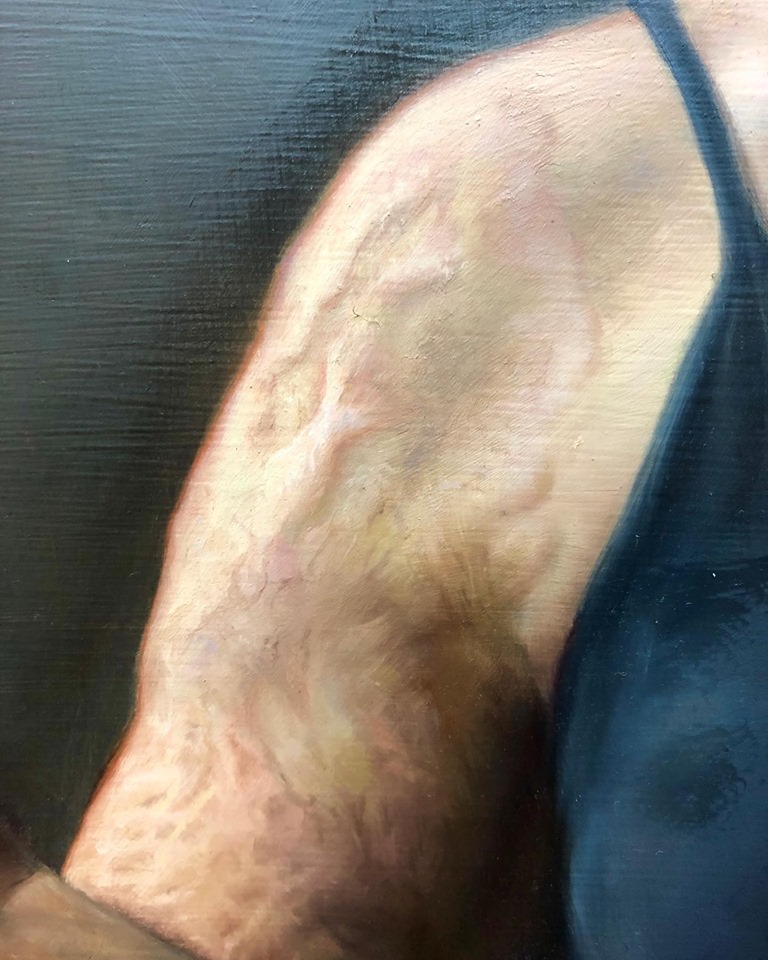
CDH: What were some of the challenges of painting images of skin that wasn’t what one normally sees in a figure painting?
GAF: The difficulty is two-fold: painting skin with so much detail takes a huge technical effort, and when it’s all done you’ve got a painting that automatically challenges our cultural standards of beauty. Most of my figure painting training was spent working with models who are generally young, of an athletic build, and without many diverse skin features. Perhaps a tattoo here or there. As a representational figure painter, my job is to have fluency painting all kinds of people and skin features like wrinkles, scars, cellulite, birthmarks, etc. It’s a thrilling challenge that forces me to decide what information is important and what is secondary. How can I describe all these small forms while retaining the integrity of the larger form? At the same time, there is an incentive to make paintings that show off the subject in their “best light.” Figure painting has a tradition of idealization and, although artists are not unbiased, I am aware that we all have a tendency to paint what we want to see rather than celebrate the truth of what is there. My hope is that this series will play a part in de-stigmatizing scars and open up a bigger conversation about body image, grief, and disability.
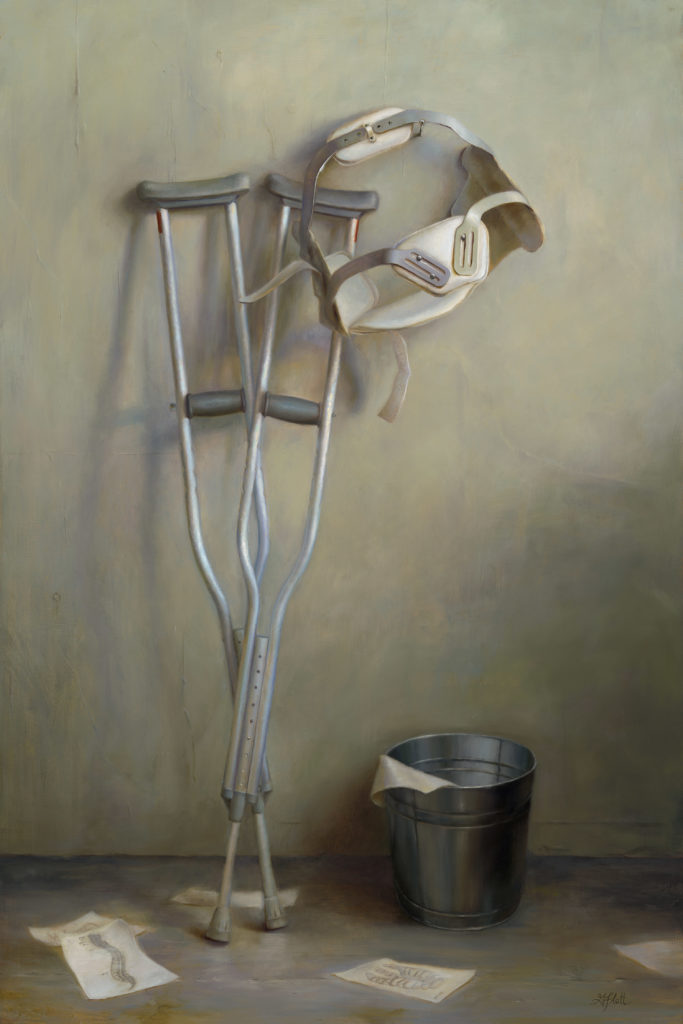
On My “Still I Rise” Series by Grace Athena Flott
This series explores loss, memory, and disability. It is inspired by my experience as a burn survivor. At the age of twenty, I was trapped in an apartment fire and had to escape the flames by jumping four stories to the ground. My resultant injuries left me temporarily dependent on a number of medical devices including the ones depicted here: a wheelchair, back brace, and crutches. When I lost my mobility at a young age, I came face to face with a new physical reality as well as cultural stereotypes surrounding ability/disability.
These paintings are an echo of the pain and triumph of that experience. Empty rooms where the human presence is felt, not seen, open the door for a reflection on our assumptions about what it means to rely on this symbolic equipment. Although I associate my own dependence on these objects with grief and isolation, it is important that these paintings communicate a sense of hope and agency. The glittering light that illuminates each scene is my way of honoring what these objects make possible for the folks who need them. The lack of a visible human subject allows us to see them as both apart from, but also integral to the identity of the individual.
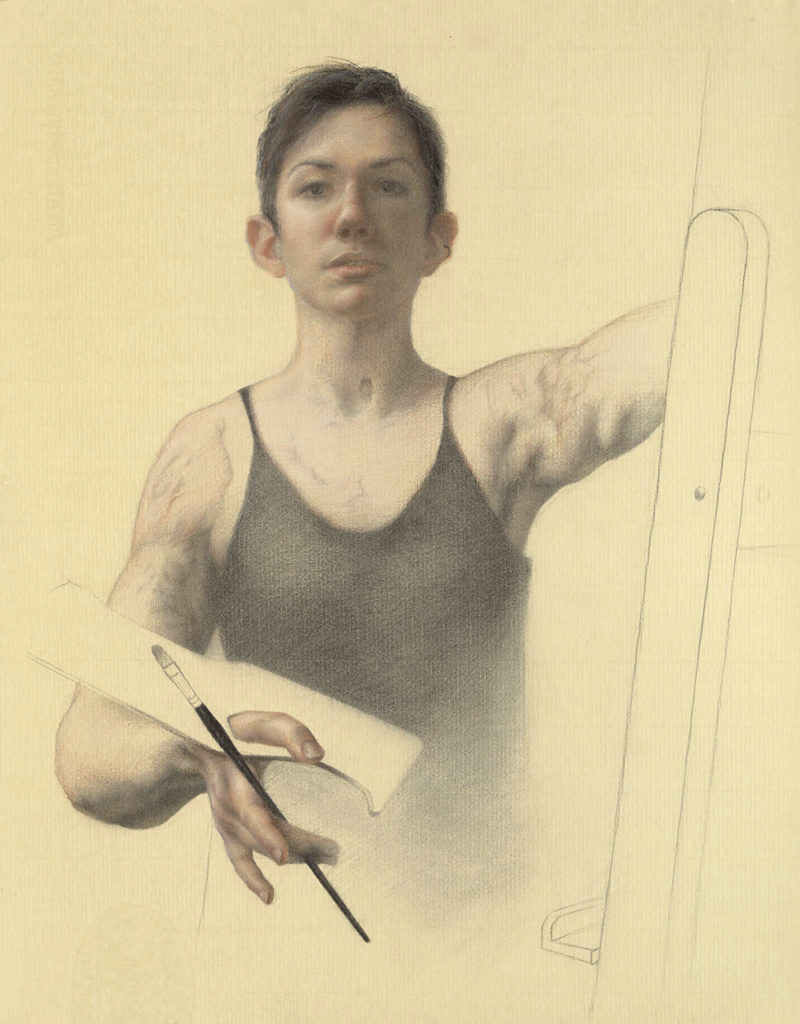
***
Grace Athena Flott lives and works in Seattle, where she is completing her studies with master contemporary painter Juliette Aristides at the Gage Academy of Art. Grace is currently taking commissions for portraits and still life paintings. She also offers private lessons for those who want to learn to make their own work of art. If you’d like to purchase or exhibit her paintings, please visit graceathenaflott.com; and follow her on Instagram: @graceathenaart.
Related article: Still I Rise: Artist Grace Athena Flott doesn’t hide her scars
Sign up to receive Fine Art Today, the free weekly e-newsletter from
Fine Art Connoisseur magazine.








